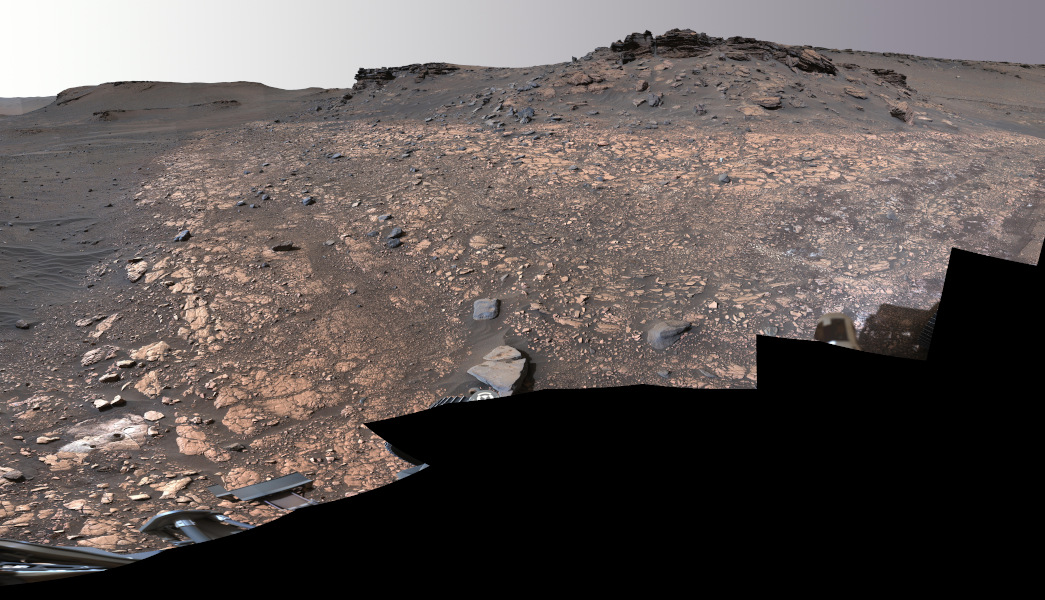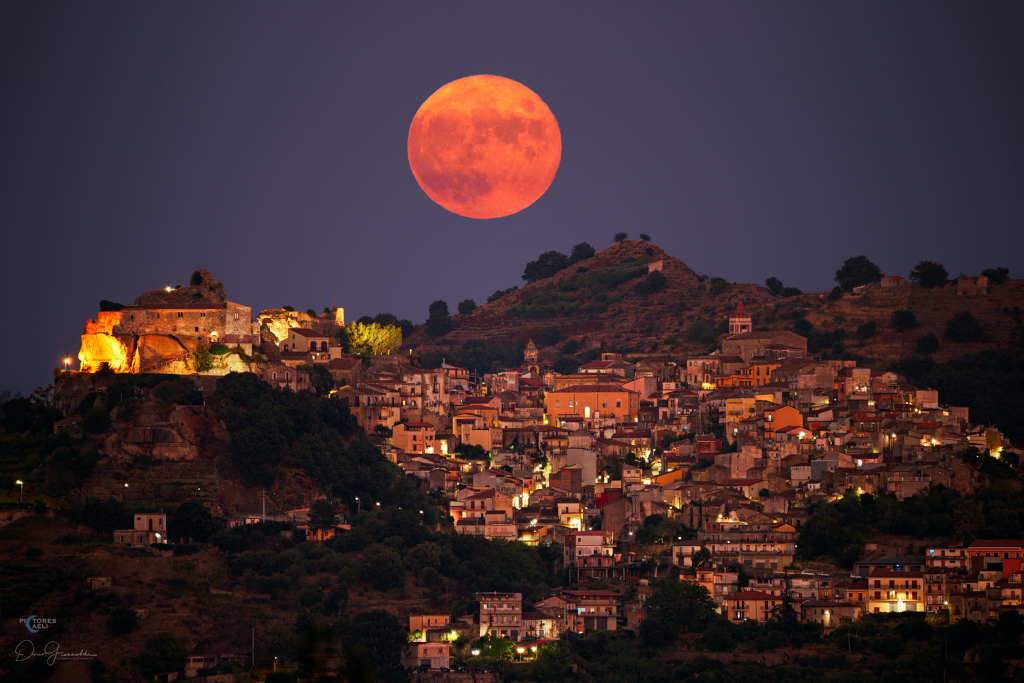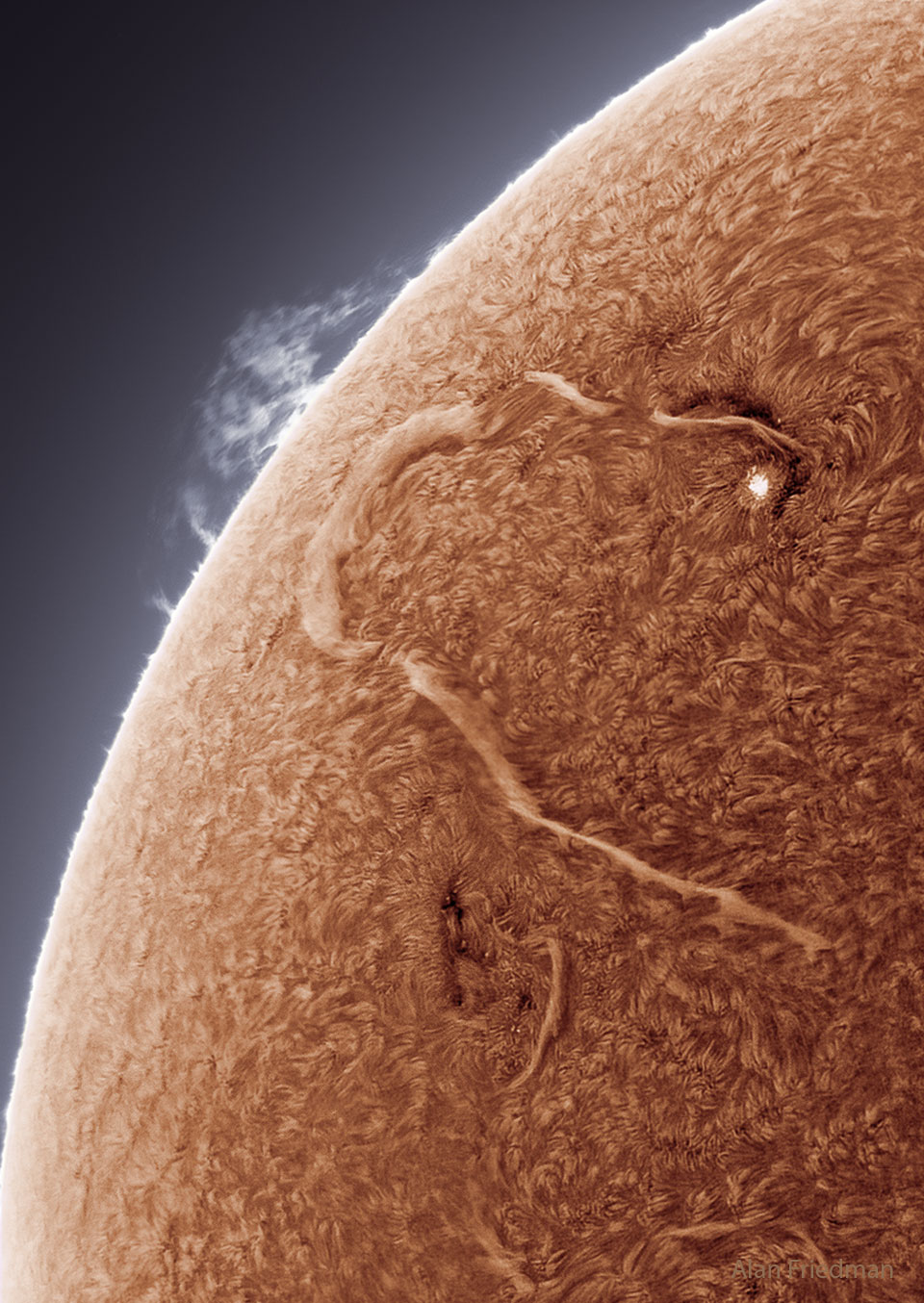Nombre total de pages vues
18/09/2022
MACROPHOTOGRAPHIE - Quand l'aube nous envoie ses tendres pensées
METEO EXTREME - Orages en Vendée - (2/10)
ASTRONOMY - Galaxy by the Lake
2022 September 10
Image Credit & Copyright: Gerardo Ferrarino
Explanation: This 180 degree panoramic night skyscape captures our Milky Way Galaxy as it arcs above the horizon on a winter's night in August. Near midnight, the galactic center is close to the zenith with the clear waters of Lake Traful, Neuquen, Argentina, South America, planet Earth below. Zodiacal light, dust reflected sunlight along the Solar System's ecliptic plane, is also visible in the region's very dark night sky. The faint band of light reaches up from the distant snowy peaks toward the galaxy's center. Follow the arc of the Milky Way to the left to find the southern hemisphere stellar beacons Alpha and Beta Centauri. Close to the horizon bright star Vega is reflected in the calm mountain lake.
17/09/2022
ASTRONOMY - Perseverance in Jezero Crater's Delta
2022 September 17
Image Credit: NASA, JPL-Caltech, MSSS, ASU
Explanation: The Perseverance rover's Mastcam-Z captured images to create this mosaic on August 4, 2022. The car-sized robot was continuing its exploration of the fan-shaped delta of a river that, billions of years ago, flowed into Jezero Crater on Mars. Sedimentary rocks preserved in Jezero's delta are considered one of the best places on Mars to search for potential signs of ancient microbial life and sites recently sampled by the rover, dubbed Wildcat Ridge and Skinner Ridge, are at lower left and upper right in the frame. The samples taken from these areas were sealed inside ultra-clean sample tubes, ultimately intended for return to Earth by future missions. Starting with the Pathfinder Mission and Mars Global Surveyor in 1997, the last 25 years of a continuous robotic exploration of the Red Planet has included orbiters, landers, rovers, and a helicopter from planet Earth.
15/09/2022
ASTRONOMY - Harvest Moon over Sicily
2022 September 15
Image Credit & Copyright: Dario Giannobile
Explanation: For northern hemisphere dwellers, September's Full Moon was the Harvest Moon. Reflecting warm hues at sunset it rises over the historic town of Castiglione di Sicilia in this telephoto view from September 9. Famed in festival, story, and song Harvest Moon is just the traditional name of the full moon nearest the autumnal equinox. According to lore the name is a fitting one. Despite the diminishing daylight hours as the growing season drew to a close, farmers could harvest crops by the light of a full moon shining on from dusk to dawn.
14/09/2022
SANTé/MEDECINE - Encore trop de substances nocives dans les dentifrices

ASTRONOMY - Waves of the Great Lacerta Nebula
Image Credit & Copyright: Jarmo Ruuth, Telescope Live; Text: Ata Sarajedini (Florida Atlantic U., Astronomy Minute podcast)
Explanation: It is one of the largest nebulas on the sky -- why isn't it better known? Roughly the same angular size as the Andromeda Galaxy, the Great Lacerta Nebula can be found toward the constellation of the Lizard (Lacerta). The emission nebula is difficult to see with wide-field binoculars because it is so faint, but also usually difficult to see with a large telescope because it is so great in angle -- spanning about three degrees. The depth, breadth, waves, and beauty of the nebula -- cataloged as Sharpless 126 (Sh2-126) -- can best be seen and appreciated with a long duration camera exposure. The featured image is one such combined exposure -- in this case 10 hours over five different colors and over six nights during this past June and July at the IC Astronomy Observatory in Spain. The hydrogen gas in the Great Lacerta Nebula glows red because it is excited by light from the bright star 10 Lacertae, one of the bright blue stars just above the red-glowing nebula's center. The stars and nebula are about 1,200 light years distant.
13/09/2022
MERVEILLEUX MONDE SOUS-MARIN - Tortue verte

VOIE LACTEE SUR TERRE - L'émerveillement du Plateau de Valensole

FuturaSciences
ASTRONOMY - A Long Snaking Filament on the Sun
2022 September 13
Image Credit & Copyright: Alan Friedman (Averted Imagination)
Explanation: Earlier this month, the Sun exhibited one of the longer filaments on record. Visible as the bright curving streak around the image center, the snaking filament's full extent was estimated to be over half of the Sun's radius -- more than 350,000 kilometers long. A filament is composed of hot gas held aloft by the Sun's magnetic field, so that viewed from the side it would appear as a raised prominence. A different, smaller prominence is simultaneously visible at the Sun's edge. The featured image is in false-color and color-inverted to highlight not only the filament but the Sun's carpet chromosphere. The bright dot on the upper right is actually a dark sunspot about the size of the Earth. Solar filaments typically last from hours to days, eventually collapsing to return hot plasma back to the Sun. Sometimes, though, they explode and expel particles into the Solar System, some of which trigger auroras on Earth. The pictured filament appeared in early September and continued to hold steady for about a week.
ASTRONOMY - Globular Cluster M15 Deep Field
2025 November 26 Globular Cluster M15 Deep Field Image Credit & Copyright: Alvaro Ibanez Perez Explanation: Stars, like bees, swarm a...

-
2022 September 26 All the Water on Planet Earth Illustration Credit: Jack Cook, Adam Nieman, Woods Hole Oceanographic Institution ; Data ...
-
2025 May 11 The Surface of Venus from Venera 14 Image Credit: Soviet Planetary Exploration Program , Venera 14 ; Processing & Copyri...






